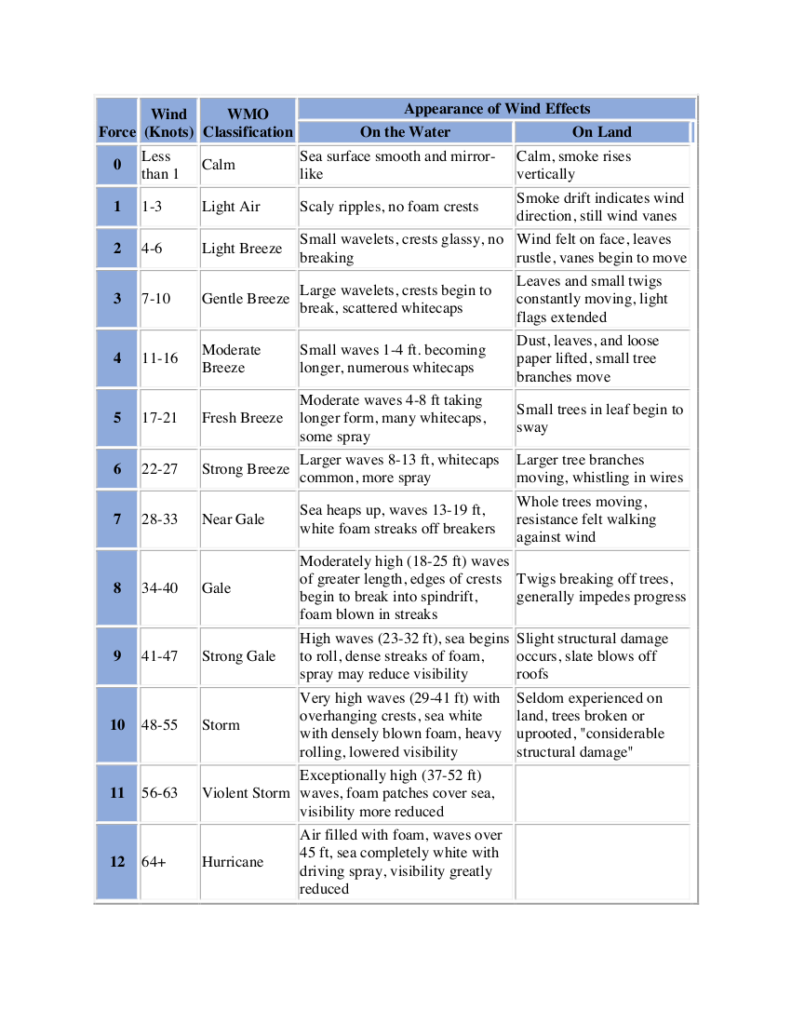Use an anemometer
An anemometer is generally the best way to determine wind speed. However, when one is not available, you may determine the speed of the wind through the use of the Beaufort Scale.
A usable alternative
The Beaufort Scale allows you to use the appearance of the sea surface to estimate wind speed. The state of the sea, the dimensions of the waves, the presence of white caps, foam, or spray, depends principally on three factors:
- Speed. The higher the speed of the wind, the greater is the disturbance.
- Duration. Disturbance increases the longer the wind blows at a given speed, until a maximum state of disturbance is reached. In other words, the longer the wind blows, the bigger the waves get, to a certain point.
- Fetch. This is the length of the stretch of water over which the wind acts on the sea surface from the same direction.
For a given wind speed and duration, the longer the fetch, the greater is the sea disturbance. If the fetch is short, such as a few miles, the disturbance is relatively small no matter how great the wind speed is or how long it has been blowing.
The Beaufort Wind Scale
The following table provides excellent guidelines on turning sea state observations into a usable estimate of wind speed.

In practice, the mariner observes the sea surface, noting the size of the waves, the white caps, spindrift, etc., and then finds the criterion which best describes the sea surface as observed.
A Caution
The Beaufort Scale assumes “steady-state” conditions. Rapid increases in wind speed take time to develop into sea state.
Duration and fetch
As can be seen in this table, Beaufort force 5 winds (17 to 21 kts) can develop into 8 foot wind waves. However, it requires over 8 hours and more than 60 miles of fetch to do so.

Significant wave height (SWH)
The maximum wave height in the second column is the average height of the highest one-third of the waves.
